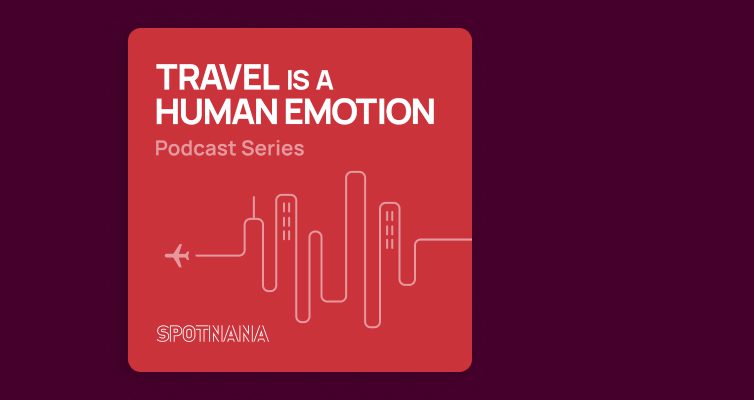How to Build Your Sustainable Business Travel Policy
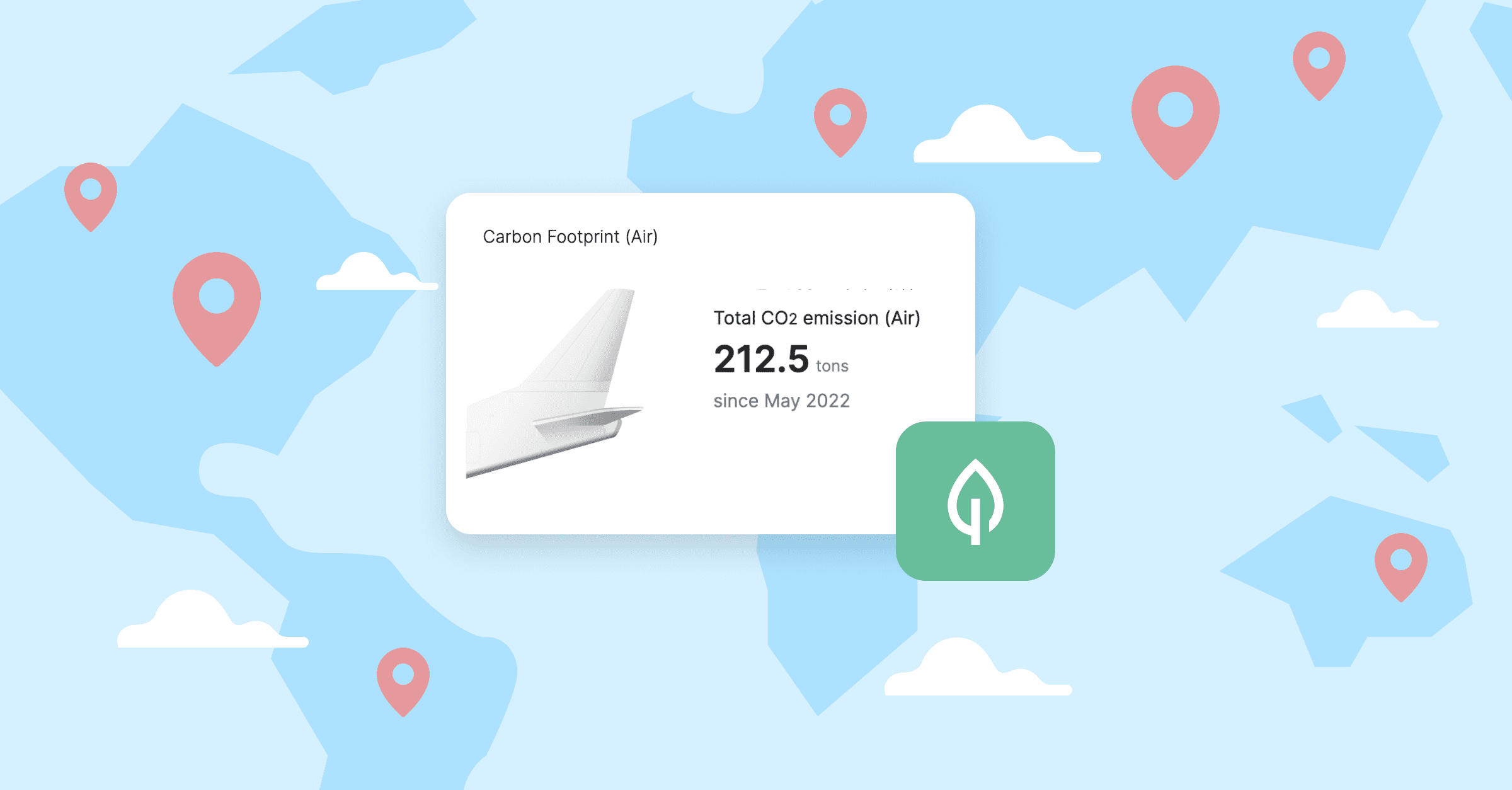
Companies are working to reduce their carbon footprint and empower employees to make choices that reduce their impact on the environment.
A recent report from the Institute of Travel Management found that sustainability is the top area where corporate travel managers do not feel that online booking tools support their needs. This stems from a disconnect between the capabilities of booking platforms and the evolving sustainability needs of the companies that use them.
Sustainable business travel policies help companies set guidelines for air travel, ground transportation, and accommodations that minimize environmental impact. Most organizations, however, do not have the right technology to put an effective policy in place to encourage sustainable corporate travel choices.
Spotnana is the first corporate travel management tool to have robust and dynamic sustainability policy capabilities built into the core of its platform.
In this blog post, we will discuss how you can build a sustainable business travel policy for your company. We will also show you how Spotnana can help you implement and manage this policy to drive more sustainable travel choices and encourage your travelers to embrace more sensible booking options.
Here are the three most important steps to take when considering building a sustainability policy to support your company’s business travel activity.
Step One: Discover your program’s carbon impact
There are a number of factors to consider when developing a sustainable business travel policy, but one of the most important is setting limits on carbon emissions.
The best way to do this is to use a carbon calculator that can help you find out your program’s current carbon output before implementing a new policy.
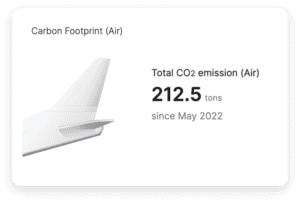
Travel managers have access to the total carbon emissions of their travel program, allowing them to design more sustainable policies.
If your global travel program is split between different providers, this can be extremely difficult and require third-party firms to collect, analyze, and report on this data in a consistent manner.
Likewise, if a large portion of your travelers book outside of your program, those trips won’t be reflected in the environmental impact of your travel program.
Spotnana’s air travel search and booking capability is fully integrated with a leading CO2 calculator that enables travelers to easily find out the estimated CO2 emission for each flight segment flown based on the combination of airline, aircraft type, and cabin class.
Since your entire global travel program can operate using Spotnana, you will quickly receive comprehensive insights into the areas in which your sustainability travel policy can create a positive impact.
Step Two: Design a policy to meet sustainability goals
Once you have insights into the areas of your travel program that lead to the highest carbon output, you can begin to build a dynamic travel policy around your goals.
Spotnana’s innovative travel policy management tool gives you the ability to set parameters around carbon emissions, allowing you to choose how much CO2 each traveler is allowed to emit per flown passenger kilometer.
Placing guidelines around this metric not only allows you to make your travel program more sustainable, it also helps you manage and monitor your progress along the way.
Short flights and domestic flights, for instance, tend to emit more CO2 per passenger flown. By placing a policy around avoiding short flights, or flights with a high CO2 volume per passenger, you can encourage travelers to choose green options like a rail trip or use teleconferencing instead.
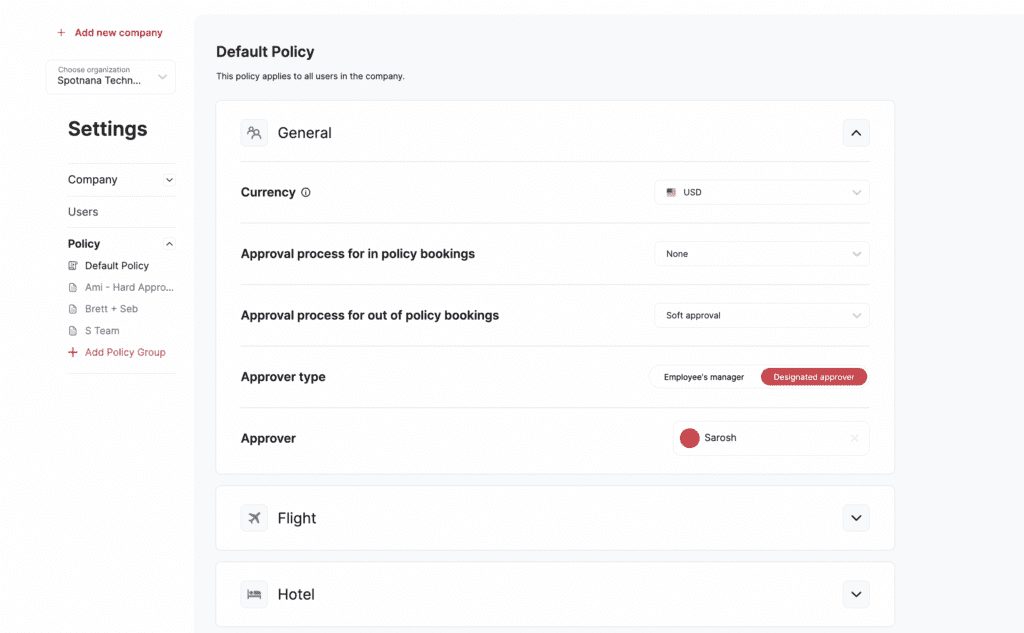
Travel managers can create policy rules around how much carbon emission is acceptable for flights booked.
The granularity of Spotnana’s policy engine also allows guidelines to be set for specific offices, groups, and departments. If you find that a particular team is flying short routes to routinely meet up in person with potential clients, for example, you can set guidelines to have them require hard approval for these trips or use rail travel instead.
Since changing the guidelines for one group doesn’t affect the rules governing your overall travel policy, travel managers can seamlessly implement new guidelines without affecting areas of a program that are working well.
Step Three: Reinforce and adjust your policy as needed
It is important to remember that a sustainable business travel policy is not a static set of rules and guidelines. As your company sustainability goals change, your policy should too.
Part of this is related to your organization and individual travelers’ reaction to a new policy. Communication is essential to helping travelers embrace new policy requirements. If policy rules aren’t reflected by visual feedback provided during the search and booking process, travelers may become frustrated and begin to book out of compliance.
Spotnana brings the carbon impact of traveler choices to the forefront of the corporate travel search and booking process with a fully integrated display of the estimated CO2 emissions for a flight based on a combination of airline, aircraft type, and cabin class.
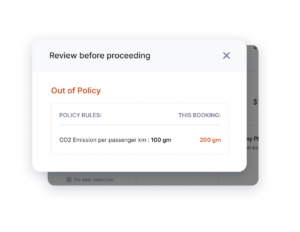
Travelers are prompted during the booking process if their selection violates their corporate sustainability guidelines.
This allows you to be proactive about setting and enforcing a policy and provides valuable feedback to travelers about why certain choices are better for the environment and others have a higher impact.
Travelers also receive an out of policy warning when selecting travel choices that violate your organization’s sustainable travel policy, encouraging them to select another option.
If you find that travelers are routinely violating your policy by receiving exceptions or booking outside the platform, you can tighten the rules or increase communication and education around the importance of sustainable business travel choices.
If a particular route is consistently being booked that doesn’t fit within your sustainability goals, for example, you can quickly adjust your policy to forbid bookings on that route without disrupting the rest of your company’s travel.
Spotnana displays the estimated carbon output of a flight on the checkout screen to remind travelers of the impact of their decisions. Once a trip is booked, the total carbon output of a trip is displayed prominently on the trip page as well.
By showing individual travelers the impact of their choices, you can help drive buy-in for your travel program and train your travelers to select more sustainable options that achieve your company’s goals.
Want to to get started building your sustainable business travel policy? Contact us for a demo to see how Spotnana can help you meet your sustainability goals.

